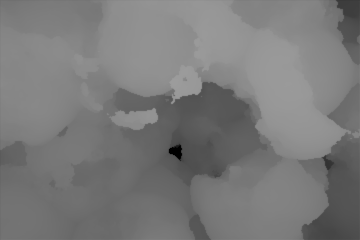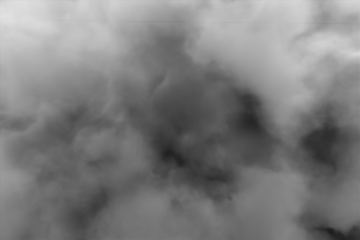Search is based on keyword.
Ex: "Procedures"
Do not search with natural language
Ex: "How do I write a new procedure?"
Volume Render Outputs
Learn about the different Volume render outputs.
Volumetric Depth

Volumetric items are not evaluated for all render outputs items, such as Depth, so the Volumetric Depth option allows you to calculate depth values for volumetric items in the scene.
Note: Each pixel in the volume can only have a single depth value, so opacity is not considered for this type of output.
Volumetric Opacity

The Volumetric Opacity output evaluates the transparency of the volumetric elements in the scene, allowing you to separate the opacity of the volume independent of the rest of the scene's elements for compositing.
Volumetric Scattering

The Volumetric Scattering render output renders only the volumetric elements of a scene, including those generated by sprites, volumes and volumetric lights.
Compositing Outputs
Render outputs are incredibly useful when you wish to compose the generated layers individually in an external application, such as Photoshop, After Effects, Nuke or Fusion. This can aid in tweaking color, among other settings as a post process without requiring additional render time. The question most often asked is which render outputs combine to equal the final color output. The answer is Diffuse Shading (Total) + Transparent Shading + Reflection Shading + Specular Shading + Subsurface Shading + Luminous Shading = Final Color, where each successive layer is added to the layer below in the composition (also called linear dodge). Rendering each layer at a gamma of 1.0 and then combining them and adding the gamma back to the fully composed layers produce the best results.
You may also render out simultaneous alpha channels for each item in a scene by creating item masks for each and placing a render output set to Effect > Alpha (or simply adding them to existing Shader Tree masks). Then each time a render command is invoked, all active render outputs get generated simultaneously.
Sorry you didn't find this helpful
Why wasn't this helpful? (check all that apply)
Thanks for your feedback.
If you can't find what you're looking for or you have a workflow question, please try Foundry Support.
If you have any thoughts on how we can improve our learning content, please email the Documentation team using the button below.
Thanks for taking time to give us feedback.
